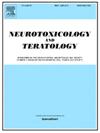Assessing replicability and power estimates of behavioral performance of control rats across standardized pre-clinical and toxicology studies
IF 2.8
3区 医学
Q3 NEUROSCIENCES
引用次数: 0
Abstract
Behavioral assays are critical in evaluating impacts on nervous system function in rodents due to genetic or environmental factors and are frequently incorporated into regulatory decision-making studies. Despite numerous sources of guidance for such studies, results across behavioral assays are reputed to be highly variable with questionable replicability. Behavioral data obtained from control rats within four contract laboratory studies were used to evaluate replicability across studies, calculate the level of statistical power, and estimate the number of animals required for a specific effect size. For the three behaviors evaluated here (motor activity, acoustic startle response, and learning and memory), control rats from all studies showed the expected pattern of behavior, e.g., open field acclimation, startle habituation, % prepulse inhibition (PPI) over pre-pulse intensities, and acquisition and goal quadrant preference in the Morris Water Maze (MWM). For selected representative individual endpoints, power analyses were conducted to evaluate sample size requirements. Across all endpoints, a drop in power occurred as differences between two groups became smaller. Power analysis of multiple representative endpoints suggested that a sample size of 20 may detect a 30 % effect with 80 % power. Sample size requirements changed with the effect size, and achieving 80 % power with a 20 % effect size generally required a sample size of 30 rats. While the behavioral performance was replicated over the Study Cohorts, power analyses suggested a need for moderation of expectations regarding detectable differences if decisions relied on single endpoints or small effect sizes. Reporting results from a low powered study can have significant and wide-ranging impacts, including undermining confidence in data interpretation, misleading future research, and failing to adhere to the ethical framework of the 3 R's.
在标准化的临床前和毒理学研究中评估对照大鼠行为表现的可重复性和功率评估。
行为分析对于评估遗传或环境因素对啮齿动物神经系统功能的影响至关重要,并且经常被纳入监管决策研究。尽管此类研究的指导来源众多,但行为分析的结果被认为是高度可变的,可重复性值得怀疑。从四个合同实验室研究中获得的对照大鼠的行为数据用于评估研究之间的可重复性,计算统计能力水平,并估计特定效应大小所需的动物数量。对于这里评估的三种行为(运动活动、声惊吓反应、学习和记忆),所有研究的对照大鼠都表现出预期的行为模式,例如开放场适应、惊吓习惯化、脉冲前抑制(PPI)超过脉冲前强度,以及莫里斯水迷宫(MWM)中的习得和目标象限偏好。对于选定的具有代表性的个体终点,进行功率分析以评估样本量要求。在所有的终点上,当两组之间的差异变小时,权力就会下降。多个代表性终点的功率分析表明,20个样本量可以检测到30 %的效应,功率为80 %。样本量要求随着效应量的变化而变化,在20 %的效应量下达到80 %的功效通常需要30只大鼠的样本量。虽然行为表现在研究队列中得到了重复,但功效分析表明,如果决策依赖于单终点或小效应量,则需要对可检测差异的期望进行适度调节。低强度研究的结果报告可能会产生重大而广泛的影响,包括破坏对数据解释的信心,误导未来的研究,以及未能遵守3r的道德框架。
本文章由计算机程序翻译,如有差异,请以英文原文为准。
求助全文
约1分钟内获得全文
求助全文
来源期刊
CiteScore
5.60
自引率
10.30%
发文量
48
审稿时长
58 days
期刊介绍:
Neurotoxicology and Teratology provides a forum for publishing new information regarding the effects of chemical and physical agents on the developing, adult or aging nervous system. In this context, the fields of neurotoxicology and teratology include studies of agent-induced alterations of nervous system function, with a focus on behavioral outcomes and their underlying physiological and neurochemical mechanisms. The Journal publishes original, peer-reviewed Research Reports of experimental, clinical, and epidemiological studies that address the neurotoxicity and/or functional teratology of pesticides, solvents, heavy metals, nanomaterials, organometals, industrial compounds, mixtures, drugs of abuse, pharmaceuticals, animal and plant toxins, atmospheric reaction products, and physical agents such as radiation and noise. These reports include traditional mammalian neurotoxicology experiments, human studies, studies using non-mammalian animal models, and mechanistic studies in vivo or in vitro. Special Issues, Reviews, Commentaries, Meeting Reports, and Symposium Papers provide timely updates on areas that have reached a critical point of synthesis, on aspects of a scientific field undergoing rapid change, or on areas that present special methodological or interpretive problems. Theoretical Articles address concepts and potential mechanisms underlying actions of agents of interest in the nervous system. The Journal also publishes Brief Communications that concisely describe a new method, technique, apparatus, or experimental result.

 求助内容:
求助内容: 应助结果提醒方式:
应助结果提醒方式:


